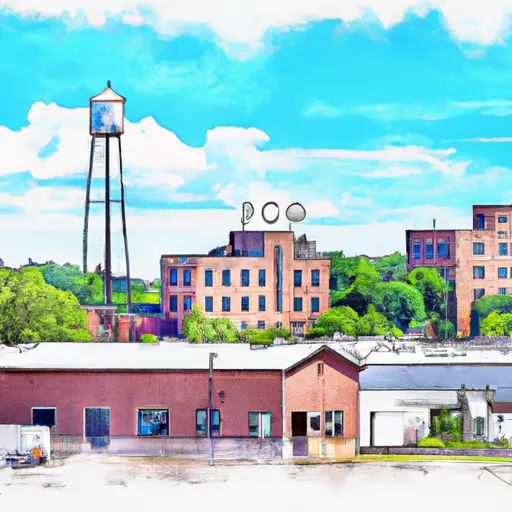-
 Snoflo Premium
Snoflo Premium
Get unlimited access to all our content
With no Ad interruptions! - Start Your Free Trial Login with existing account
Proctor
Eden Index
Climate
5.3
•
Recreation
3.2
•
Community
2.7
•
Safeguard
3.9/10

Proctor, Minnesota is a small city located in the northeastern part of the state. It experiences a humid continental climate, characterized by warm summers and cold winters. Average temperatures range from 15°F (-9°C) in winter to 75°F (24°C) in summer. The area receives an average annual precipitation of around 30 inches (76 cm), with snowfall being common in the winter months.
Proctor is situated near the St. Louis River, which plays a significant role in its hydrology. The river serves as one of the primary water sources for the city, providing freshwater for various activities. It also offers opportunities for outdoor recreation, such as fishing, canoeing, and kayaking. The river is known for its diverse fish population, including walleye, northern pike, and smallmouth bass, attracting anglers from all around.
Apart from the St. Louis River, Proctor is surrounded by numerous forests, parks, and trails, making it an ideal destination for outdoor enthusiasts. Jay Cooke State Park is a popular spot nearby, offering hiking trails, camping facilities, and picturesque views of the rugged terrain. Overall, Proctor provides a variety of opportunities for outdoor recreation, allowing residents and visitors to enjoy the natural beauty of the area.
What is the Eden Index?
The Snoflo Eden Index serves as a comprehensive rating system for regions, evaluating their desirability through a holistic assessment of climate health, outdoor recreation opportunities, and natural disaster risk, acknowledging the profound impact of these factors on livability and well-being.
Climate Health Indicator (CHI): 5.3
Proctor receives approximately
769mm of rain per year,
with humidity levels near 82%
and air temperatures averaging around
5°C.
Proctor has a plant hardyness factor of
4, meaning
plants and agriculture in this region thrive during a short period during spring and early summer. Most
plants will die off during the colder winter months.
By considering the ideal temperature range, reliable water supplies, clean air, and stable seasonal rain or snowpacks, the Climate Health Indicator (CHI) underscores the significance of a healthy climate as the foundation for quality living.
A healthy climate is paramount for ensuring a high quality of life and livability in a region, fostering both physical well-being and environmental harmony. This can be characterized by ideal temperatures, reliable access to water supplies, clean air, and consistent seasonal rain or snowpacks.
Weather Forecast
Streamflow Conditions
St. Louis
Area Rivers
St. Louis
Snowpack Depths
St. Louis
Reservoir Storage Capacity
St. Louis
Groundwater Levels
Recreational Opportunity Index (ROI): 3.2
The Recreational Opportunity Index (ROI) recognizes the value of outdoor recreational options, such as parks, hiking trails, camping sites, and fishing spots, while acknowledging that climate plays a pivotal role in ensuring the comfort and consistency of these experiences.
Access to outdoor recreational opportunities, encompassing activities such as parks, hiking, camping, and fishing, is crucial for overall well-being, and the climate plays a pivotal role in enabling and enhancing these experiences, ensuring that individuals can engage in nature-based activities comfortably and consistently.
Camping Areas
| Campground | Campsites | Reservations | Toilets | Showers | Elevation |
|---|---|---|---|---|---|
| Hoodoo Point City Campground | 85 | 1,362 ft | |||
| Fishermans Point City Campground | 70 | 1,441 ft | |||
| Heritage City Park | 18 | 1,439 ft | |||
| Garfvert - Nemadji State Forest | 18 | 1,162 ft | |||
| Belva - Deer Rec Area | 56 | 828 ft | |||
| Riverside Landing - St. Croix National Scenic River | None | 896 ft | |||
| Chacauqua River Access | None | 721 ft | |||
| Bear Head Lake State Park | 75 | 1,523 ft | |||
| Yenruogis County Park | None | 799 ft | |||
| Manhattan Bridge Access | None | 644 ft |
Nearby Ski Areas
Catastrophe Safeguard Index (CSI):
The Catastrophe Safeguard Index (CSI) recognizes that natural disaster risk, encompassing floods, fires, hurricanes, and tornadoes, can drastically affect safety and the overall appeal of an area.
The level of natural disaster risk in a region significantly affects safety and the overall livability, with climate change amplifying these risks by potentially increasing the frequency and intensity of events like floods, fires, hurricanes, and tornadoes, thereby posing substantial challenges to community resilience and well-being.
Community Resilience Indicator (CRI): 2.7
The Community Resilience Indicator (CRI) recognizes that education, healthcare, and socioeconomics are crucial to the well-being of a region. The CRI acknowledges the profound impact of these elements on residents' overall quality of life. By evaluating educational resources, healthcare accessibility, and economic inclusivity, the index captures the essential aspects that contribute to a thriving community, fostering resident satisfaction, equity, and social cohesion.

